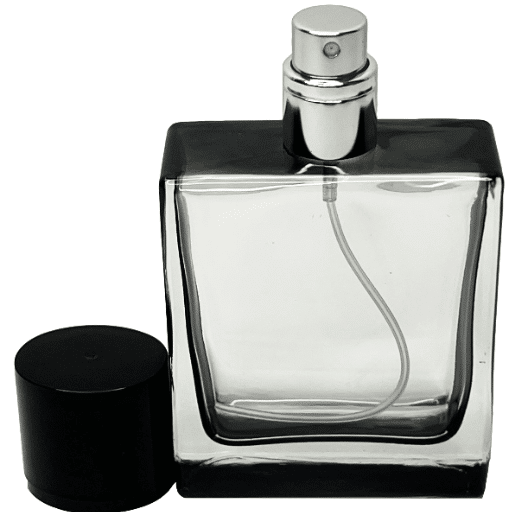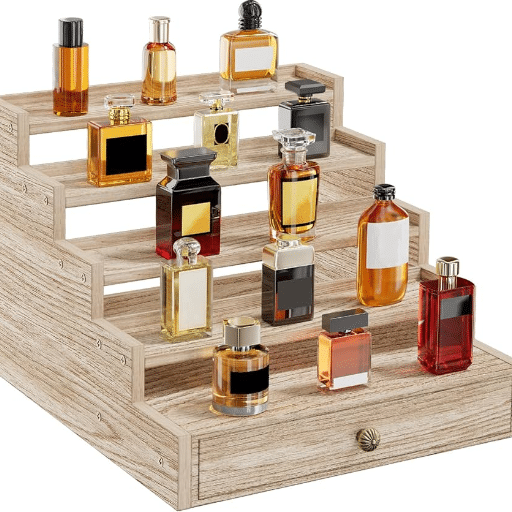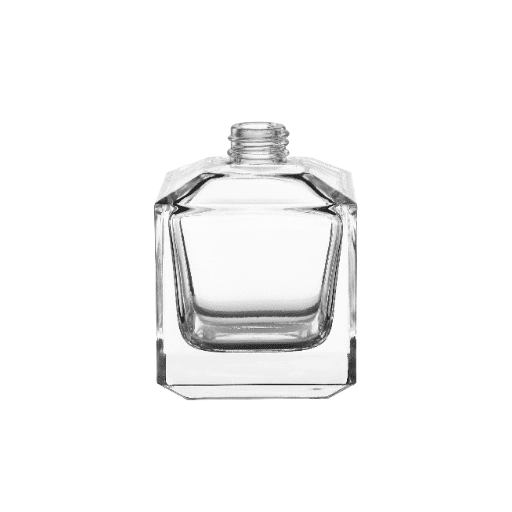While shopping for perfumes, you may have encountered original bottles and testers, but do you know what sets them apart? Knowing these differences can be particularly important when you want to purchase correctly. Tester’s quality bafflement or lower price cynicism—regardless of your concern, this article aims to explain everything. We will focus on the details like packaging, pricing, and contents so that you can make an informed decision. Continue reading to learn everything you require before buying your next best fragrance.
What Is a Perfume Tester and How Does It Differ from Regular Perfumes?
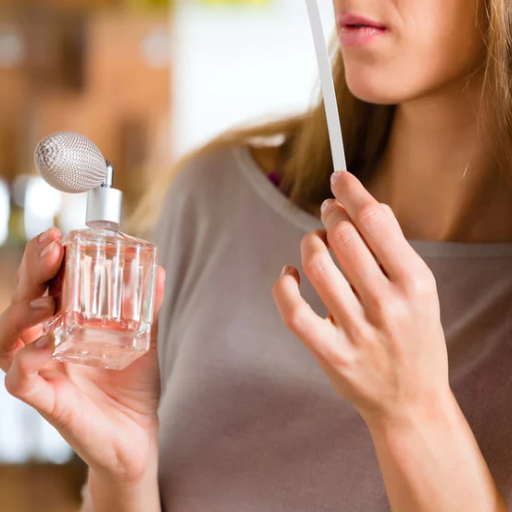
A perfume tester is a fragrance made primarily for advertising and testing. Unlike standard perfumes, testers are usually less fancy. They generally lack a box or other packaging, which is more common with standard perfumes. Trim caps are also an uncommon addition to testers. Regardless, every tester version is filled with perfume from the standard version, meaning the volatile perfume is still high quality.
In most cases, testers are only meant for retail clients who must let their customers try out different scents at a pre-purchase stage. Because of their simple packaging, testers tend to have reduced prices but ring retail testers and lesser value perfumes. You can rest easy knowing that perfume misters’ scent quality and longevity are the same as the non-tester versions.
Defining Tester Perfumes and Their Purpose in the Fragrance Industry
Tester perfumes are essential in the perfume industry, especially with their economic and environmental benefits. One of the most significant advantages for buyers is that tester perfumes are cheaper than normal perfumes but of much higher quality brands. Typically, retailers offer these whittled-down versions without sleeves and caps for an even better price than their regular-priced off-the-shelf counterparts.
From an ecological point of view, reduced waste is an advantage of a more straightforward tester perfume presentation. The usual perfume packaging contains layers of glass, plastic, and paper, all of which contribute to the environmental footprint of production. Minimized versions, or testers, can help reduce this impact. With the increasing focus on sustainable living, customers appreciate these practices.
In addition, sales data from the tester perfume segment show increased sales due to both budget and eco-friendly shoppers. Provided that the scent and formulation are identical to the full-priced product, consumers no longer have to forgo the luxury experience. Instead, they can enjoy it without feeling guilty about the environment or emptying their pockets. With these attributes, tester perfumes become favorable in today’s economy.
Key Differences in Packaging Between Tester and Original Perfume Bottles
- Outer Packaging
Bottles of tester perfumes are often packaged in simple and mundane cardboard boxes with a basic sticker label. These boxes trim down on flamboyant branding and lack adornments, logos, or any design elements associated with retail packaging. In contrast, the original perfume bottles are encased in beautifully crafted boxes that are colorful, artistic, and extravagant boxes to entice the consumer.
- Bottle Cap
Tester bottles are sometimes issued without a cap or a generic cap because their primary function is to let customers test the fragrance in the store. Retail perfume bottles, however, always come with a provided cap, often designed to fit the bottle and enhance its beauty.
- Labeling and Branding
Original perfume bottles have polished branding, including embossed or printed logos, ingredient lists, branding tags, and more. Tester bottles, however, often skip polished branding and leave marks on the bottle such as “tester” or “not for sale” in a manner that lacks marketing polish.
- Seals and Wrapping
In physical stores, retail perfumes are sealed with cellophane wrapping to guarantee freshness and ensure no tampering. On the other hand, tester perfumes are more often than not unsealed, revealing their purpose of testing.
- Size of the Bottle and Quantity
In physical stores, retail perfumes are sealed with cellophane wrapping to guarantee freshness and ensure no tampering. On the other hand, tester perfumes are more often than not unsealed, revealing their purpose of testing.
- Price Impact
The elimination of decorative features and simpler packaging make tester bottles cheaper, which appeals to consumers looking for low-priced products as long as the quality of the fragrance is not compromised. On the other hand, retail perfumes have a higher price tag because they come in elaborate packages.
These differences in packaging illustrate how tester perfumes focus on functionality and cost, whereas retail bottles prioritize luxury and aesthetics.
Are Perfume Testers Made with the Same Fragrance Formula as Retail Bottles?
Yes, the formula for the fragrance in perfume testers is the same as in retail bottles. Manufacturers ensure that the scent in the tester is the same as the retail version because testers, by definition, must accurately represent the product’s smell to interested buyers. This uniformity builds trust by enabling consumers to access the true scent without a purchase commitment. As noted by industry experts, there is no cut in quality or concentration of the perfume in testers; only the pack’s design is more economical. It must be emphasized that customers can confidently expect the fragrance in the tester to match the retail bottle they purchase.
Is There a Quality Difference Between Tester and Original Perfume?
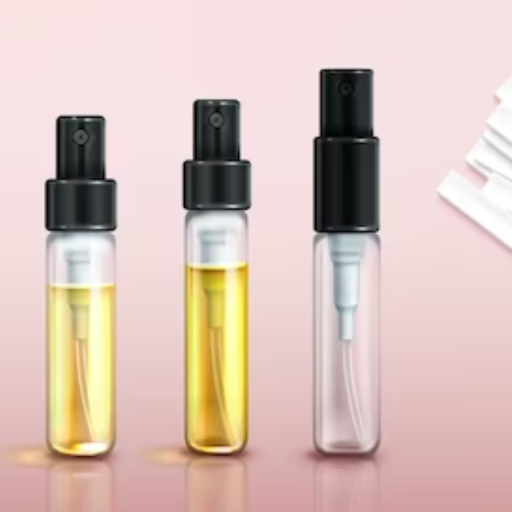
No, there isn’t any qualitative disparity between the tester and the original perfume. Testers are filled with the same fragrance as the retail version, meaning the scent remains the same. The only difference is with the box, as testers usually come with simpler boxes or no caps to save money. Both provide the same wonderful experience that clients can confidently assess the perfume before purchase.
Comparing Scent Concentration and Longevity Between Testers and Retail Versions
There isn’t any difference between the test and retail versions in terms of scent concentration and duration. Testers are meant to flaunt a perfume’s quality and are crafted with the same fragrance formula as retail bottles. Both versions are crafted with the same level of aromatic compounds, guaranteeing that scent strength and projection will be consistent.
Research and other findings by industry experts have shown that lasting factors, like the composition of fragrance, type of skin, and overall environment, are the same with testers and retail products. The same applies to ensure users’ durability and scent intensity with a tester, meaning the fragrance applied would be the same as with retail. Understanding this puts clients at ease, knowing they can choose without worrying about losing quality.
Do Perfume Testers Contain the Same Perfume Liquid as Original Bottles?
Generally, perfume testers have the same fragrance liquid as retail bottles. The only difference is the packaging. Testers often come in simple boxes or lack fancy caps to save on production costs for easy store displays. Industry research shows that manufacturers ensure the fragrance composition in testers is the same as in retail versions to give potential buyers an accurate representation of scents. The brand’s trust-building practices are consistent, guaranteeing that the fragrance quality is unchanged between tester and retail packaging.
Examining Whether Testers Have a Higher Concentration of Oils
Testers also often come with top caps shaped like a brand’s logo, which adds uniqueness and can appeal to in-store displays. A common misconception about fragrance testers is that they have more perfume oils than retail versions. Industry experts stress that the formulation, including the ratio of essential oils and alcohol, is the same for both testers and retail versions. Further studies and professional analyses verify no modification in concentration or quality is intended to “enhance” testers. This and other measures ensure a reliable experience for customers assessing scents pre-purchase.
Why Are Perfume Testers Cheaper Than Original Packaging Versions?
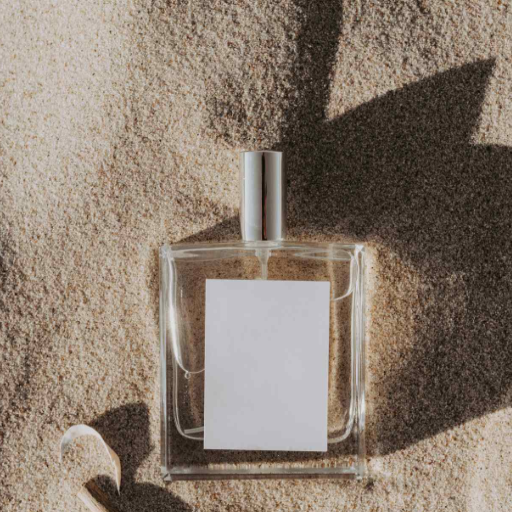
Testers don’t have the brand markings that retail bottles do, so they are cheaper than the original perfume versions. They are made specifically for sampling purposes. The simpler labeling and packaging are stripped away, and the savings are passed down to customers, although the perfume is still of the same quality and concentration. Furthermore, testers usually do not have sealable caps, reducing production and distribution costs.
Understanding the Price Difference Between the Tester and the Original Perfume
Marketing and packaging expenses largely influence the price gap between testers and original perfumes. Posh package design is a must for retail bottles- decorative boxes, intricate bottles, brand seals, and more—dramatically increasing the price. Functionality is prioritized for testers, leading them to be housed in plain boxes or even completely unlabeled boxes devoid of outer packaging.
Additionally, the cost-saving element of the distribution strategy concerning testers is sophisticated. Their distribution as display samples to stores limits availability and reduces advertising expenditure. Industry research suggests that the packaging and branding of luxury perfumes can account for up to 40% of the business. Hence, testers are often more affordable while maintaining the same quality and concentration as the retail versions.
As a result, the streamlined style coupled with the single-minded intention behind testers makes them appealing to cost-oriented customers who are more concerned with scent than sight.
How Simplified Packaging Affects the Cost of Tester Bottles
Minimalist design and style cut down the cost of tester bottles and their design. Packaging in the retail perfume world goes as far as using elaborate branding and attracting high-quality materials meant to entice customers. However, these can add significant value to the product. Studies show that packaging and distribution can cost anywhere between 25% to 30% of the retail price in the fragrance industry. Unlike other retail products, tester bottles come mostly in blank boxes or without a box, so they are sold without expensive packaging costs. The lack of additional items like decorative caps also helps inhibit the cost of production. The only goal of this efficient approach is to provide the same fragrance but an inexpensive graphic design of costly quality. Tester bottles can be purchased for a far lower price than branded perfume bottles without suffering any considerable losses in quality.
Marketing and Distribution Factors That Make Testers More Affordable
Marketing strategists usually do not give testers much thought. Both retailers and manufacturers trim down on tester packing so they can be shipped and stored more easily. With no need for elaborate external designs, testers become smaller and lighter, reducing transportation costs. Furthermore, these items usually go straight to retail outlets or are used as promotional samples, which removes some expenses that would otherwise be spent on advertisement and branding for retail products.
Testers also shift a significant portion of their stocks without trying too hard, selling them in smaller volumes or bulk to other distributors. Retailers use testers to encourage in-store trials, a smart way to drive sales without spending too much on ads. This balanced approach to both marketing and distribution turns out to be most economical for sellers and customers alike. For simple products like testers, these cost-saving tactics work splendidly.
Where to Buy Tester Perfumes Safely and Avoid Fake Perfume Scams

To buy tester perfumes, make sure that you choose trusted retailers, authorized perfume shops, or verified online marketplaces with credible sellers. Offline retail shops like Sephora, Nordstrom, or brand official outlets usually stock authentic testers. Always check seller ratings, reviews, and return policies online for legitimacy. Avoid promotions, as they are too good to be true and would typically be linked to counterfeit items. Lastly, check for unmatched brand labeling and packaging, as the brand sets standards to confirm authenticity.
Best Places to Buy Tester Perfumes Online and In-Store
When looking for tester perfume, trust your sources because they go a long way in determining authenticity. FragranceNet, FragranceX, and Notino are reputable online stores whose customer reviews validate and offer various discounted testers at competitive prices. These platforms provide customer reviews and descriptions to guide you in making the right decision. However, these are not the only online stores; platforms like Amazon and eBay stand a chance only if you verify that the sellers boast high ratings.
Sephora, Macy’s, and Nordstrom are great candidates for purchasing perfumes in-store since they occasionally sell tester perfumes at cheaper prices. Outlet stores and warehouse clubs like TJ Maxx or Ross sell authentic testers at cheaper prices. While shopping in person, one can evaluate the quality of the packaging and scent, which assures the purchase. Choosing sellers with a good reputation eliminates the risks when purchasing online or offline fragrances.
How to Identify Authentic Perfume Testers from Counterfeit Versions
Finding authentic perfume testers can be difficult, but to make an informed decision, there are specific details to look for. Start with the exterior, paying close attention to the box. Authentic testers are known to come with simple boxes, such as white or brown, with clear labels containing the name, concentration, and batch number of the fragrance. Counterfeits will likely include names printed on the boxes of poor quality and inconsistencies in the fonts used.
Moving on, check the bottle itself. Name-brand fragrances will always have the same quality bottle, cap, and sprayer. Look for precise etchings, brand logos, and pristine finishes on the bottle. Counterfeit bottles will have sloppy glasswork or lettering, misplaced logos, or ill-fitting caps.
Another critical step that people often overlook is the fragrance. With authentic testers, the fragrance will be just as strong and lasting as the full-sized product to be genuine. Check whether the fragrance smells overly diluted, sharp like alcohol, or fades too fast because these could indicate fake products.
Lastly, check the batch code on the bottom of the box or bottle. Use a reliable online batch code checker to confirm the production date to ensure it matches the manufacturer’s details. Buying from authorized dealers or well-reviewed websites also dramatically minimizes the chances of buying counterfeits. Cautiously attending to these details guarantees you acquire genuine tester perfumes.
Are Branded Perfumes Sold as Testers Always Legitimate?
Though branded perfumes sold as testers are often legitimate, caution should be taken when buying them. Widely known perfume testers are manufactured by the seller but do not include fancy boxes or lids as marketing tools; instead, they come in simpler bottles, which are then shipped to retailers. Some sellers, however, exploit this by pretending to sell counterfeit goods and marking them as testers. Testers have been found to account for a considerable part of the perfume market and have been found to contain dangerous, low-quality ingredients often. Authenticity should only be verified by looking at the advertisements, such as claiming how long the scent lasts and their packaging and label details. An attempt to distinguish dubious replicas from authentic goods involves shopping from approved sellers and checking batch codes.
Are There Any Risks When Buying a Tester Perfume Instead of Original?
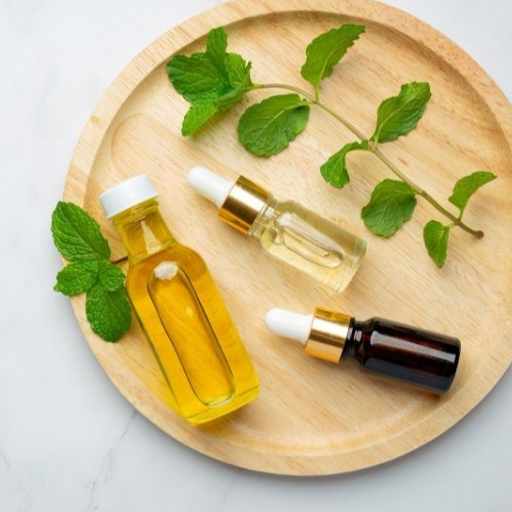
Indeed, there are some risks related to buying a perfume tester instead of the original fragrance. There is a way a perfume tester looks quite different from standard perfume packaging. This makes it challenging to assess authenticity. In addition, there is also the risk that the product has been tampered with, diluted, or improperly stored, invalidating its scent and longevity. Purchase tester perfumes from reputable sellers or retailers and check for brand consistency, batch codes, and other markers of authenticity to minimize these risks.
Common Concerns About Buying Perfume Testers
Another legitimate concern is the legality of purchasing tester perfumes. Testers are usually meant to be used within the store for display purposes and may not be intended for resale. For consumers, purchasing such products is not particularly illegal. Selling them, however, shifts the paradigm and, without appropriate disclosure, might lead some regions into agreements or regulations breaches.
Some buyers also raise concerns about the manufacturing date of a tester perfume. As these are not frequently restocked like the retail version, there is a chance that testers are simply older products quite close to their expiration dates. Because perfume can degrade with time, especially when exposed to light, heat, or improperly stored, checking the product’s longevity is a must before purchase.
Concerns also arise from the disparity of prices. While tester perfumes are priced lower than their packaged alternatives, a price drop to significantly lower amounts could mean fake or copy products. Consumers are advised to check the brand’s average rates for the specific scent offered to confirm they receive a genuine product at a reasonable price.
Warranty and Return Policies for Tester Versus Original Perfumes
I’ve noticed a significant gap between the tester and original packaged perfumes regarding warranty and return policies. Original perfumes usually have manufacturer warranties, stipulating an easy return if a quality defect arises. The guidelines are stricter or nonexistent with testers, as products sold without protective measures aren’t consumer-friendly. For this reason, I always check available return options and warranty terms before making a purchase, especially for testers, to eliminate any future complications.
Potential Differences in Shelf Life Between Testers and Retail Bottles
Factors like storage temperature, chemical makeup, and exposure to air and light influence the shelf life of perfumes. Testers usually have more access to air and light than retail bottles, which, until purchased, remain sealed. The increased exposure can speed oxidation, harming the quality of the perfume over time.
Moreover, retail bottles have their packaging done in a manner that protects the perfume for a long time. The protective packaging and tight seals preserve the integrity of the fragrance. On the contrary, testers are not packaged with the same protective measures, making them more vulnerable to external factors. Storing many perfumes in a cool, dark place allows them to remain stable for years, while the ease of handling tester perfumes may shorten their effective shelf life. For testers and retail bottles, proper storage is critical to preserving the quality of the scent for as long as possible.
Reference Sources
- “Evaluating the Performance of Tester Perfumes Compared to Retail Versions” (2021)
This study analyzed the chemical composition of tester perfumes and compared them with their retail counterparts. Researchers utilized gas chromatography-mass spectrometry (GC-MS) to identify any variations in the formula. The findings revealed that tester perfumes are chemically identical to retail versions. However, environmental factors such as prolonged exposure to air and light can lead to slight degradation in olfactory performance over time.
- “Consumer Perceptions of Tester Perfumes Versus Regular Packaging” (2020)
This research used a survey-based methodology to examine consumer opinions regarding tester perfumes. Participants were asked to evaluate various criteria, including scent longevity, authenticity, and packaging differences. Results highlighted that while testers provide a comparable scent experience to retail products, the absence of premium packaging often influences perceived value.
- “Impact of Storage Conditions on Tester Perfume Longevity” (2022)
This paper investigated how storage environments affect the longevity and quality of tester perfumes—testing involved storing bottles under controlled light, heat, and humidity conditions for 12 months. The study found that testers exposed to high temperatures and direct sunlight exhibited faster scent degradation than those stored in optimal conditions, emphasizing the importance of proper storage practices.
- “Olfactory Consistency in Tester and Full-Sized Perfume Bottles” (2019)
Researchers employed blind sensory panels to compare olfactory consistency between tester bottles and full-sized versions. Key findings indicated no statistically significant differences in fragrance composition or projection when testers were freshly opened. However, older tester bottles showed slight variations due to prolonged exposure.
These studies provide comprehensive insights into tester perfumes, exploring their chemical integrity and consumer reception. Together, they highlight the importance of proper storage and challenge misconceptions about tester quality.
Frequently Asked Questions (FAQs)
Q: What is the difference between perfume testers and regular perfumes?
A: The main difference between perfume testers and regular perfumes lies in their packaging and pricing, not the fragrance itself. Testers contain the exact same eau de parfum or eau de toilette as the retail versions. However, testers typically come in plain, minimal packaging or a simple tester box rather than the luxurious packaging of regular bottles. This allows perfume brands to save on packaging costs while providing the same original fragrance quality. Testers are also often priced lower than their regular counterparts, making them a cost-effective way to purchase genuine perfume.
Q: What is the difference between a tester and an original product?
A: The difference between a tester and an original product is primarily in presentation, not content. Both contain the identical fragrance formula—the same aroma and concentration, whether eau de parfum or eau de toilette. The original product comes in elaborate retail packaging designed for consumer appeal, while a tester is packaged minimally, often in a plain white box labeled “Tester” or “Not for Sale.” Original bottles may feature decorative caps or sprayers, whereas tester bottles contain the same amount of perfume fluid but might have a simple cap or no cap. The perfume quality and version of the perfume remain consistent between both options.
Q: How different are perfume testers from regular bottle perfumes?
A: Perfume testers and regular bottle perfumes contain identical fragrance formulations—the same concentration, quality, and aroma profile. The key differences are in presentation and price. Tester packaging is typically minimalist, often featuring a plain box or sometimes no box, and may come with a simple cap or no cap. Regular bottles come in attractive retail packaging designed for gift-giving or display. Testers are usually priced 15-30% lower than regular retail bottles, making them an economical choice for consumers who prioritize the fragrance itself over presentation. Both contain the same amount of perfume fluid (typically 50ml or 100ml) and offer identical performance and longevity.
Q: What’s the difference between perfume testers and original fragrances regarding quality?
A: There is no difference in quality between perfume testers and original fragrances. Both contain the same eau de parfum or eau de toilette formulation. Perfume testers are genuine products created by the same perfume brands that make the retail versions—they’re simply produced for testing purposes in stores. The fragrance composition, concentration, longevity, and projection are identical. The only fundamental differences are in packaging and price. Testers are frequently from identical production batches as regular retail bottles, ensuring you get the authentic, original fragrance at a lower price point when you purchase a tester.
Q: Why are testers vs original perfumes sold at different prices?
A: Testers are sold at lower prices than original perfumes primarily because of reduced packaging costs. While both contain the identical fragrance formula and the same amount of perfume fluid (whether it’s 50ml, 100ml, or 1.2 ml of perfume fluid in a sample), original perfumes come in elaborate retail packaging with decorative bottles and caps designed to enhance shelf appeal and gift-giving potential. Testers are usually packaged in plain boxes labeled “Tester” or “Not for Sale,” often without the fancy outer box and sometimes without a cap. This significant reduction in packaging expenses allows retailers to offer testers at 15-30% lower prices while providing the same Eau de parfum or eau de toilette quality. It’s essentially a way to purchase genuine perfume without paying for luxury packaging.
Q: How can I identify fake tester perfumes from authentic ones?
A: To identify fake tester perfumes from authentic ones, examine several key factors. First, check the packaging—even though tester packaging is minimal, authentic tester boxes typically maintain the brand’s typography and basic design elements. Second, the bottle quality must be inspected; authentic tester bottles contain the same high-quality glass and precise printing as retail versions. Third, verify the fragrance performance; a genuine tester includes 100% of the original fragrance with identical longevity and projection. The scent development should match the known aroma profile of the authentic perfume. Price is another indicator—if a deal seems too good to be true (significantly lower than typical tester prices), it might be counterfeit. Finally, purchase from reputable retailers specializing in authentic perfume products to minimize the risk of buying fake tester perfumes.
Q: Can I tell if I have a perfume without packaging that it’s a tester?
A: If you have a perfume without packaging, you can identify whether it’s a tester by looking for specific indicators on the bottle. Authentic testers usually have “Tester” or “Not for Sale” printed directly on the bottle or a sticker attached to it. The bottle design will be identical to the regular version of the perfume, but testers frequently come without a decorative cap or with a simple utilitarian cap. Some perfume brands also use a different batch code format for their testers. Suppose your bottle matches the authentic design but lacks the fancy packaging and decorative elements of retail versions, especially if it’s marked as a tester. In that case, you likely have an original tester rather than a regular retail bottle that has simply lost its packaging.
Q: Are there any differences in how long testers vs regular perfumes last?
A: There are no differences in longevity between testers and regular perfumes. Since both contain identical fragrance formulations—eau de parfum or eau de toilette—with the same concentration and quality of ingredients, they project and last on the skin for the same duration. The misconception that testers might be weaker or stronger comes from the fact that some testers may have been open in stores for demonstration purposes, potentially leading to some evaporation or oxidation over time. However, when purchased new and sealed, a tester contains the same amount and quality of perfume fluid as its regular counterpart, ensuring identical performance. Both versions will last according to their concentration type, with eau de parfum typically lasting longer than eau de toilette.

